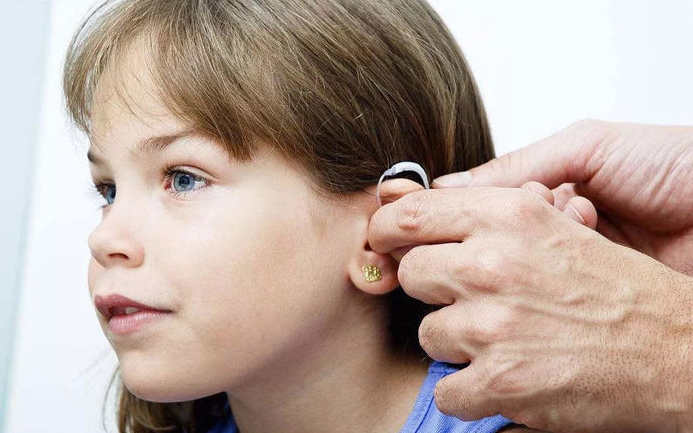After sounds get picked up by the hearing aid microphones and amplified to meet your hearing needs, they must be delivered directly into your ears, and this is the job of the hearing aid speaker or the Receiver. After the amplifier sent an electrical signal to the speaker, the speaker will convert that signal back into sound (acoustic energy).
Depending on the severity of your hearing loss and lifestyle preferences, the hearing aid speaker can be located in an ear dome or an earmold.
Hearing Aid Speaker in the Ear Canal
The most common type of hearing aid is the Receiver-In-The-Ear (RITE) hearing aid, or you can also call them Receiver-In-Canal (RIC) hearing aids.
The RITE hearing aids look very similar to BTEs, with one crucial difference. For the RITE hearing aids, the hearing aid speaker is located inside the ear canal, which allows the hearing aid a more petite and elegant look. RITEs also allow sounds to flow more naturally into the ears, making them a more open-fit hearing aids.
Why Receiver-In-Ear Hearing Aids Could be Ideal
-
There is less chance for feedback (whistling).
-
Excellent at amplifying high-pitched sounds.
-
You will have a more natural, clearer sound quality.
-
Easy to wear, small, discreet, lightweight, and comfortable.
-
It is easy to get the right fit with a hearing professional.
-
Multi microphones feature offer the best hearing experience in noise.
-
Suitable for all types of hearing loss.
What is the Purpose of Hearing Aid Domes?
A hearing aid dome is a tiny, bell-shaped, or mushroom-shaped silicone piece that fits into the ear canal and attaches to the hearing aid tubing. You can choose from various sizes and shapes of domes to fit into one's ear canals. Your hearing professional can also help you select the correct size of domes. It is essential to select the correct size domes. A poorly fitted dome can lead to sounds escaping from the ear, and it can cause feedback.
You can easily clean the domes by using a soft dry cleaning cloth every night, and when you are wiping off the domes, you should also check to see if the domes are properly attached to the tubing. If you have any issues with the domes, they are simple and cheap to replace.
How can I tell if my hearing aid domes are properly fitted?
The next step, after you picked the type of domes that are right for you, your hearing professional will help you to pick the correct size of the domes. There are many sizes and dimensions to the domes. This is because everyone's ears' size and shape are different, so it is important to find the correct size.
The hearing aid dome should not be too large to create a too tight of seal in your ear canal. If the dome is too big, it may even cause pain in the ear, and your voice may sound too hollow. The domes should also not be too small. This is because too small of a dome can lead to the hearing aid not staying in the ear stably.
Why are hearing aid speakers called Receivers?
When talking about hearing aids, one of the common terms you would hear is “Receiver”; but how did this term become so popular? From an engineering perspective, the Receiver is the part of the hearing aid that receives the electric signals and converts them into amplified audio or acoustic signals. The signals are then sent directly into the individual's ear and ultimately reach up to the brain to get processed.

